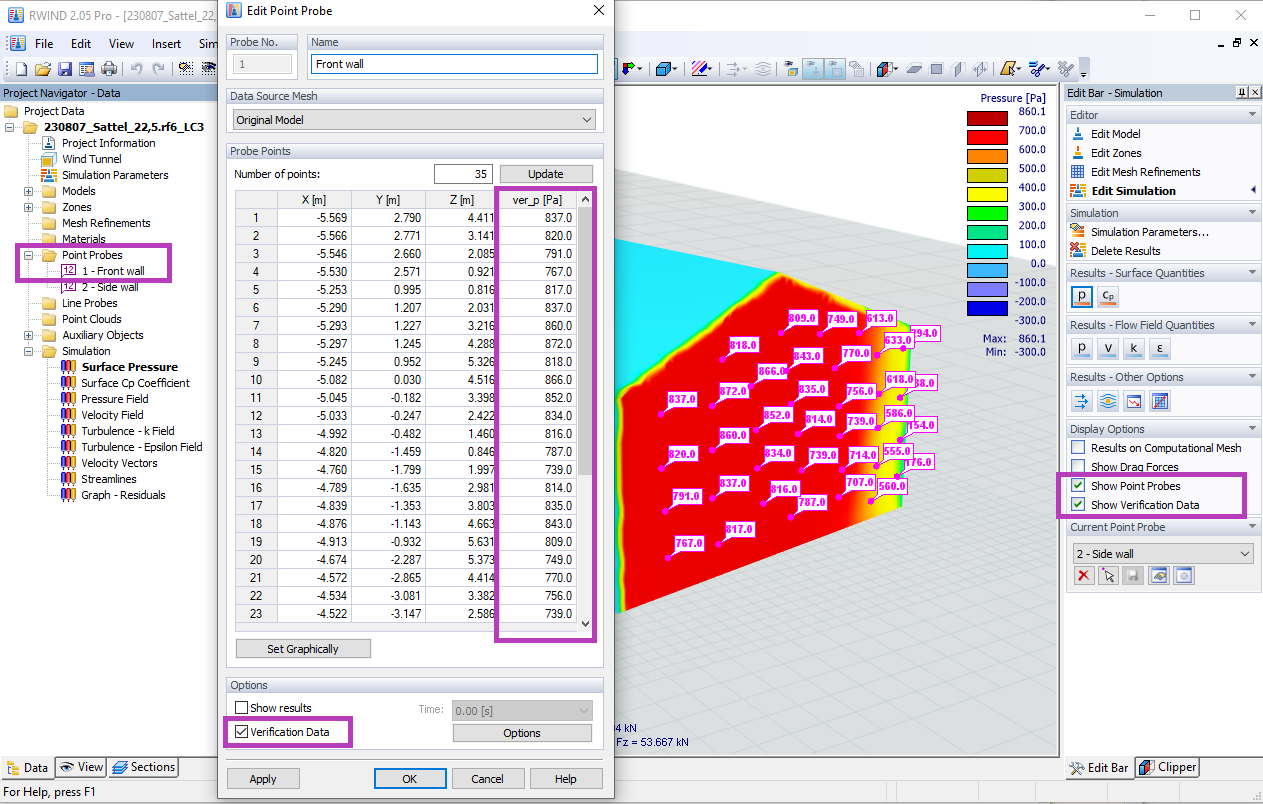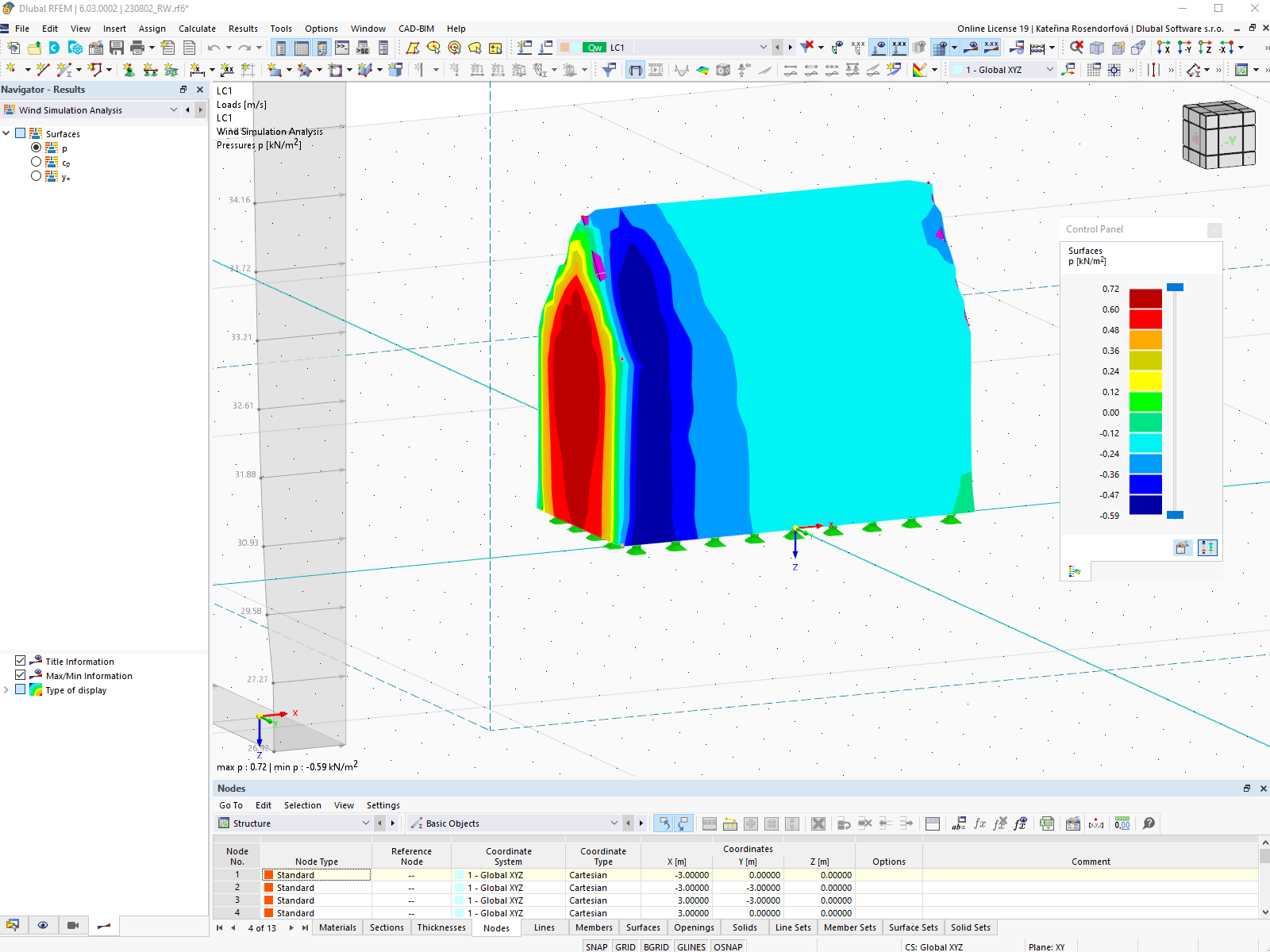Accuracy of RWIND Results and Ratio of Accuracy Versus Cost
The RWIND program was designed to quickly and easily calculate wind flow around buildings in order to obtain pressure values on their surfaces and generate load forces. In order to meet this main goal, a number of compromises had to be made, such as allowing the use of a simplified model or a relatively coarse computational mesh. It is obvious that these simplifications affect the accuracy of the results. Increasing the accuracy of the results using a finer mesh and other user settings in RWIND is possible, but this process may not be easy and requires sufficient experience with CFD simulations. An important question here is what is the acceptable ratio of effort and cost to the improvement in accuracy achieved. We recommend reading the CFD Project Accuracy vs. Effort article which deals with this issue in detail.
RWIND Error E315
When increasing the mesh density, memory and performance requirements do not grow linearly, but with the 3rd to 4th power (we have three spatial dimensions and also a reduction of the time step is necessary). This not only leads to a significant slowdown of the calculation, but also various problems can start to appear, which are usually related to the fact that the program approaches its limits or the limits of the hardware used. These problems also include error E315 which indicates a general failure inside the OpenFOAM© calculation modules – such as memory allocation failure, loss of numerical precision, and so on. The specific reasons for the failure can be different. More detailed information can be found from the relevant Log File.
RWIND Customer Support and its Limits
Dlubal customer support always tries to help RWIND users who encounter any problems. However, numerical simulations of wind flow can be very complex and results cannot generally be guaranteed. This is due to the fact that there is still no mathematical proof of the existence and uniqueness of the solution of the Navier-Stokes equations that describe this flow and which RWIND solves numerically using the finite volume method. Although the calculation converges to the correct solution in most cases, a failure of the calculation cannot be excluded. In the event that a calculation failure occurs in a large and complex project, assistance can be very time-consuming. If you are interested in additional extended assistance, please Contact Our Sales Team:










































